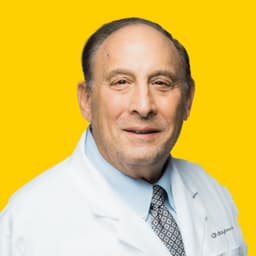Clearing the Air: Truths and Myths About Snoring and Sleep Apnea

Dr. Martin Hopp MD, ENT
Snoring and obstructive sleep apnea (OSA) are often misunderstood. Many people hold misconceptions that can prevent them from seeking the treatment they need. Let's clear the air by addressing some common myths and truths about these conditions.
Myth 1: All People Who Snore Have Obstructive Sleep Apnea, and Visa Versa
Truth: While snoring can be a symptom of OSA, not everyone who snores has this condition. OSA is characterized by repeated episodes of partial or complete obstruction of the airway during sleep, leading to breathing pauses. These episodes must occur an average of at least five times per hour, with each pause lasting at least 10 seconds, to diagnose OSA. Some people snore without experiencing these breathing interruptions, these conditions are known as primary snoring or upper airway resistance syndrome (UARS). Conversely, some individuals with OSA experience "silent apnea," where they don't snore at all.
Myth 2: People with OSA Die in Their Sleep Due to Suffocation
Truth: The primary risk associated with untreated OSA is not suffocation during sleep but the development of severe health conditions over time. OSA increases the risk of cardiovascular issues such as heart attack and stroke. The repeated drop in blood oxygen levels strains the cardiovascular system, leading to these potentially fatal conditions.
Myth 3: Snoring Is Harmless and Just Funny
Truth: Snoring is often joked about, but it can significantly impact health and quality of life. Chronic snoring can lead to fragmented sleep, causing daytime fatigue, irritability, and decreased cognitive function. It can also strain relationships with bed partners. More importantly, snoring can be a sign of a more serious underlying condition like OSA.
Myth 4: Snoring and OSA Only Affect Older, Overweight Men

Truth: While being older, male, and overweight are risk factors for OSA, this condition can affect anyone – even children. Other risk factors include neck circumference, family history, smoking, alcohol use, certain medical conditions.....just to name a few.
Because of this preconception, as well as symptoms sometimes differing from men, women have historically been extremely underdiagnosed for sleep apnea. But sleep apnea in women is real, and should be treated.
And some of the most elite athletes in world are not exempt; many NFL players suffer from sleep apnea.
Myth 5: Sleep Tests Are Uncomfortable and Inconvenient
Truth: Many people avoid sleep tests because they envision spending a night in a sleep lab with wires attached to their body while being observed. However, advances in technology have made home sleep studies mainstream. These tests are conducted with a small device worn on the finger, making the process more comfortable and accessible.
Daybreak sells just such a home sleep study, and makes the process easy and pain-free. To learn more about the differences between a traditional in-lab sleep study and a modern at-home sleep study, check out our article, "At Home Sleep Study: The Process of Testing."
Myth 6: CPAP & Surgery are the Only Treatments for OSA
Truth: Continuous positive airway pressure (CPAP) therapy is a common treatment for OSA, and there are invasive surgeries available for those who qualify, but they’re not the only option. Many patients struggle with CPAP compliance due to discomfort, and many patients prefer to avoid invasive surgery if possible. Alternative sleep apnea treatments include mandibular advancement devices (MADs), which are non-invasive, reversible, and effective. MADs are like sleep apnea mouthguards and gently hold the lower jaw forward to keep the airway open.
Daybreak: Your Partner in Sleep Health
At Daybreak, we understand the importance of addressing snoring and OSA with effective, convenient solutions. We offer at-home diagnosis and treatment options, including MAD therapy. Our approach allows you to get the care you need from the comfort of your home, so you can start to have great nights and even better mornings.
Myth 7: Only CPAP is Covered by Insurance for Treating Sleep Apnea
Truth: While CPAP machines are the most commonly prescribed and reimbursed treatments for obstructive sleep apnea, most insurance covers multiple treatment modalities for sleep apnea.
And specifically, sleep apnea mouthguards are covered by insurance. Daybreak has insurance experts standing by, ready to check your specific insurance policy here.
